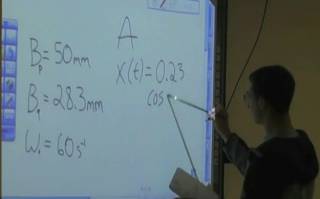Initial conditions
Highlights of the activity
- This small group activity is designed to help upper-division undergraduate students move between two different representations of the harmonic motion, namely $A\sin \left(\omega t + \phi\right)$ and $B_1\sin \left(\omega t\right) + B_2\cos \left(\omega t\right)$.
- Students apply specific initial conditions to determine the two arbitrary constants in the two different forms.
- The wrap-up discussion reinforces that both forms describe the same motion and that the relationship between the two forms can be easily derived using standard trigonometric expansions.
Reasons to spend class time on the activity
This is a good refresher activity for the students. Most of them will have seen something similar in introductory physics using the \(y\left( t \right)=A\cos \left( \omega t+\varphi \right)\) representation. Most will not have mastered the technique, and the use of the \(y\left( t \right)=B_{p}\cos \omega t+B_{q}\sin \omega t\) representation adds a novel twist.
The relationships among the arbitrary constants will emerge, and this is an important take-home message.
It is also a good place to distinguish between the constants that are determined by initial conditions and the constant that is imposed by the system parameters.
This is early enough in the course that students still need practice in working in groups.
